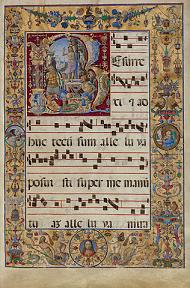Common Core Standards for English Language Arts
Grades K–5
SPEAKING AND LISTENING
K.1 Participate in collaborative conversations with diverse partners about kindergarten topics and text with peers and adults in small and larger groups.
K.3 Ask and answer questions in order to seek help, get information, or clarify something that is not understood.
1.4 Describe familiar people places, things, and events, with relative details expressing ideas and feelings more clearly.
1.6 Produce complete sentences when appropriate to task and situation. (See grade 1 Language standards 1 and 3 for specific expectations.)
2.4 Tell a story or recount an experience with appropriate facts and relevant, descriptive details, speaking audible in coherent sentences.
3.6 Speak in complete sentences when appropriate to task and situation in order to provide requested detail or clarification. (See grade 3 Language standards 1 and 3 for specific expectations.)
4.1 Engage effectively in a range of collaborative discussions (one-on-one, in groups, and teacher-led) with diverse partners on grade 4 topics and texts, building on others' ideas and expressing their own clearly.
4.6 Differentiate between contexts that call for formal English (e.g., presenting ideas) and situations where informal discourse is appropriate (e.g., small-group discussion); use formal English when appropriate to task and situation. (See grade 4 Language standards 1 and 3 for specific expectations.)
5.3 Summarize the points a speaker or media source makes and explain how each claim is supported by reasons and evidence, and identify and analyze any logical fallacies.
5.6 Adapt speech to a variety of contexts and tasks, using formal English when appropriate to task and situation. (See grade 5 Language standards 1 and 3 for specific expectations.)
Visual Arts Content Standards for California Public Schools
Grade K
1.0 Artistic Perception
1.3 Identify the elements of art (line, color, shape/form, texture, value, space) in the environment and in works of art, emphasizing line, color, and shape/form.
2.0 Creative Expression
2.6 Use geometric shapes/forms (circle, triangle, square) in a work of art.
4.0 Aesthetic Valuing
4.2 Describe what is seen (including both literal and expressive content) in selected works of art.
Grade 1
1.0 Artistic Perception
1.3 Identify the elements of art in objects in nature, in the environment, and in works of art, emphasizing line, color, shape/form, and texture.
Grade 2
1.0 Artistic Perception
1.3 Identify the elements of art in objects in nature, the environment, and works of art, emphasizing line, color, shape/form, texture, and space.
3.0 Historical and Cultural Context
3.3 Identify and discuss how art is used in events and celebrations in various cultures, past and present, including the use in their own lives.
Grade 3
1.0 Artistic Perception
1.5 Identify and describe elements of art in works of art, emphasizing line, color, shape/form, texture, space, and value.
Grade 4
1.0 Artistic Perception
1.5 Describe and analyze the elements of art (e.g., color, shape/form, line, texture, space, value), emphasizing form, as they are used in works of art and found in the environment.
Grade 5
3.0 Historical and Cultural Context
3.2 Identify and describe various fine, traditional, and folk arts from historical periods worldwide.
4.0 Aesthetic Valuing
4.1 Identify how selected principles of design are used in a work of art and how they affect personal responses to and evaluation of the work of art.
Music Content Standards for California Public Schools
Grade K
1.0 Artistic Perception
1.1 Use icons or invented symbols to represent beat.
2.0 Creative Expression
2.2 Sing age-appropriate songs from memory.
3.0 Historical and Cultural Context
3.1 Identify the various uses of music in daily experiences.
4.0 Aesthetic Valuing
4.2 Identify, talk about, sing, or play music written for specific purposes (e.g., work song, lullaby).
Grade 1
2.0 Creative Expression
2.2 Sing age-appropriate songs from memory.
3.0 Historical and Cultural Context
3.1 Recognize and talk about music and celebrations of the cultures represented in the school population.
Grade 2
2.0 Creative Expression
2.2 Sing age-appropriate songs from memory.
3.0 Historical and Cultural Context
3.1 Identify the uses of specific music in daily or special events.
Grade 3
3.0 Historical and Cultural Context
3.1 Identify the uses of music in various cultures and time periods.
3.4 Identify differences and commonalities in music from various cultures.
Grade 4
3.0 Historical and Cultural Context
3.1 Explain the relationship between music and events in history.
5.0 Connections, Relationships, Applications
5.2 Integrate several art disciplines (dance, music, theatre, or the visual arts) into a well-organized presentation or performance.
Grade 5
5.0 Connections, Relationships, Applications
5.1 Explain the role of music in community events.
History–Social Science Content Standards for California Public Schools
Grade K
K.6 Students understand that history relates to events, people, and places of other times.
1. Identify the purposes of, and the people and events honored in, commemorative holidays, including the human struggles that were the basis for the events (e.g., Thanksgiving, Independence Day, Washington’s and Lincoln’s Birthdays, Martin Luther King Jr. Day, Memorial Day, Labor Day, Columbus Day, Veterans Day).
3. Understand how people lived in earlier times and how their lives would be different today (e.g., getting water from a well, growing food, making clothing, having fun, forming organizations, living by rules and laws).
Grade 1
1.4 Students compare and contrast everyday life in different times and places around the world and recognize that some aspects of people, places, and things change over time while others stay the same.
1. Examine the structure of schools and communities in the past.
3. Recognize similarities and differences of earlier generations in such areas as work (inside and outside the home), dress, manners, stories, games, and festivals, drawing from biographies, oral histories, and folklore.
|
 |

|
 |




